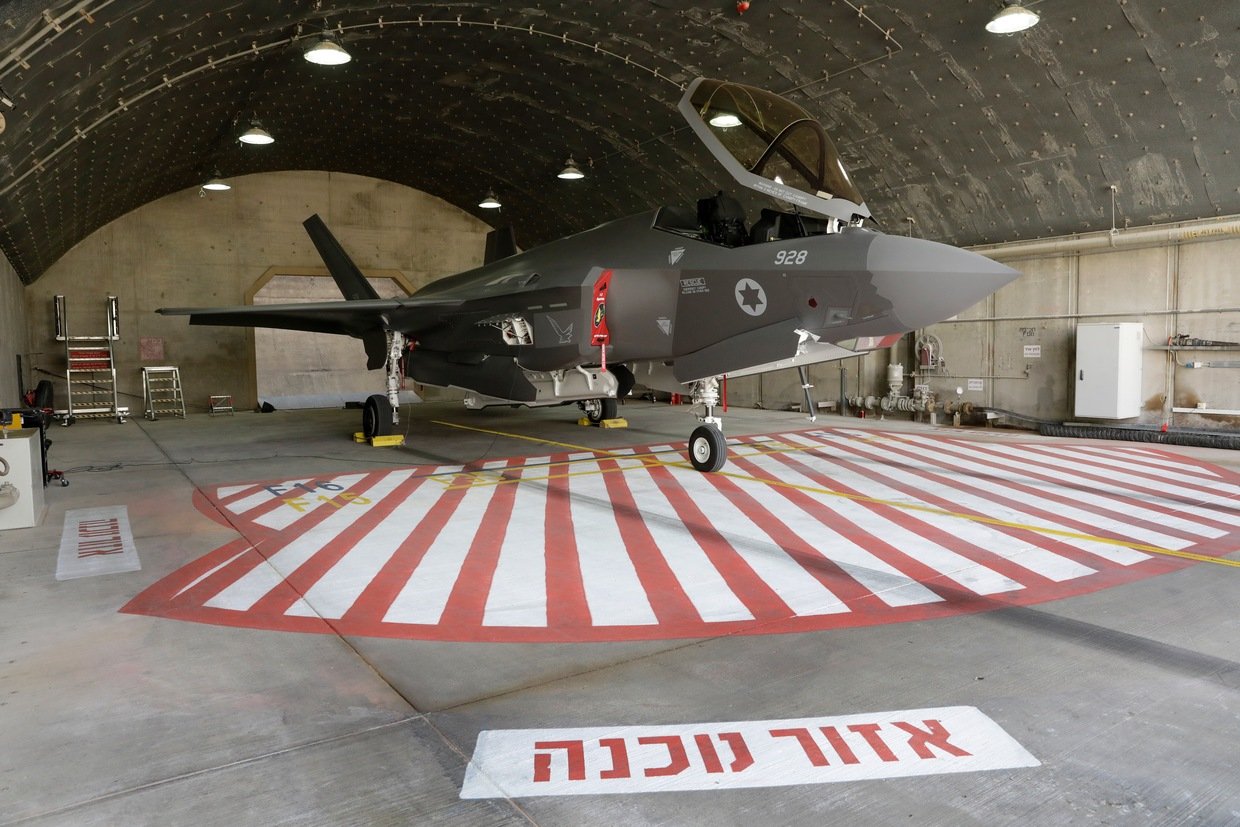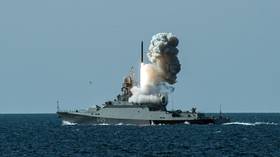F-35’s troubled present & uncertain future: Japan eyes local assembly of the fighter jet that faces new problems in the US
The F-35 program continues along its rocky path to full-rate production, facing new challenges such as a persistent lack of spare parts, poor repair capacity, and what is most dreaded – grumpy lawmakers reluctant to foot the bill.
Japan is looking to re-launch domestic production of the F-35 5th-generation fighter jets, local media reported on Wednesday. Earlier, Tokyo opted to purchase the US-made aircraft, but now the F-35’s local assembler – Mitsubishi Heavy Industries – has managed to shave the costs.
A single unit assembled in Japan is now expected to cost 9.37 billion yen ($86.3 million), compared with 9.42 billion yen ($86.7 million) to ship the plane from the US. The difference is not that big – and after all, there’s nothing wrong with simply ‘gifting’ the modest sum of $400 thousand per unit to their main ally.
Still, Tokyo is opting for local assembly – presumably hoping that the famed Japanese quality will at least save the technical issues-ridden plane from assembly-line troubles.

Technical issues persist while costs soar
The most recent blunder in the embattled F-35 program occurred last month, when aircraft deliveries were halted for two weeks after the manufacturer – Lockheed Martin – discovered a mix-up with the fasteners. Early in November, the military was notified that a “co-mingling” of titanium and Inconel fasteners occurred on the assembly line, affecting an unspecified number of planes, Pentagon acquisition chief Ellen Lord revealed on Tuesday.
The manufacturer and the military assessed the situation, and the affected machines were deemed “safe to fly,” according to Lord, who did not elaborate on whether the fasteners will be replaced in the future. Instead, she said she was “fully confident” that “we have strong quality systems” in the F-35 program – and basically, there is nothing to worry about.
The “strong quality systems” part, however, might be a bit of an exaggeration, since the Pentagon itself has repeatedly acknowledged critical issues plaguing the aircraft, which has shown very low reliability and inadequate repair capacity. The F-35 fleet does not only fail to meet the ambitious 80-percent combat readiness level, but actually falls short of the lower threshold of 65 percent, the Pentagon’s Operational Test and Evaluation (OT&E) Director Robert F. Behler told the House Armed Services Committee early in November.
Also on rt.com Frothing mad: Dutch Air Force douses 1st F-35A with corrosive firefighting foam by mistake (PHOTOS, VIDEOS)“None of the F-35 variants is meeting either the reliability or the maintainability metrics,” Behler stated. “In short, for all variants, aircraft are breaking more often than planned and taking longer to fix.”
Low reliability is compounded by a chronic shortage of spare parts, as well as soaring maintenance costs. While it’s hard to tell the real costs of the program – which is blamed on “insufficient planning” surrounding the projects – the estimates speak for themselves. During the F-35 program’s planned 60-year lifecycle, the procurement costs are expected to reach over $406 billion, while maintenance will cost more than $1 trillion.
Lawmakers reluctant to foot the bill?
The lifespan of the program might turn out to be significantly shorter, as US lawmakers are apparently becoming more and more reluctant to foot the bill for multi-year production contracts. During the November hearings in the House Armed Services Committee, they made it clear to the military that it should fix the issues plaguing the aircraft first before embarking on long, costly production plans.

“I don’t see a multi-year contract going forward until the fundamental questions that have been asked thus far, and several that have not yet been put on the table, have been resolved,” the chair of the Committee, Rep. John Garamendi (D-CA) said. “Heretofore, the contractors have had the long end of the leather. And the government has been on the short end of the leather; that’s going to change.”
Pentagon-Lockheed Martin row
While lawmakers are giving the military a hard time over the F-35 – which is actually their job – the Pentagon has also found itself in more trouble regarding the ill-fated plane.
While it might always seem like a honeymoon between the Pentagon and the military-industrial complex, the military has become entangled in an intellectual property dispute with the F-35’s supplier, Lockheed Martin. The two are disputing ownership of software linked to simulating the flight systems of the F-35. The software, known as ‘F-35-in-a-Box’, is said to be a piece of code for the Joint Simulation Environment (JSE), a US Navy facility used to simulate high-end missions for pilot training.
Also on rt.com US being picky on who gets F-35 may prove handy for Russia & help its Su-57 satisfy intl demands for 5-th generation fightersLockheed Martin claims it developed the algorithms on its own, independently of federal funding, while the Pentagon insists it was done under a government contract. Control over this would presumably provide the company with a steady flow of money – as well as some level of control over the program.
Though it’s unclear who will win, the dispute is yet another obstacle in the way of the fighter jet’s mass-production and multi-year contract.
Forget about F-35s altogether?
As the F-35 program never ceases to provide new controversies, more and more US military news-oriented media is turning to the 6th-generation fighters, signaling that the troubled jet might soon become obsolete and forgotten.
The problem is, the prototypes are not expected before the mid-2030s. And no one really knows what the 6th-gen jets will be exactly (in fact, the definition of the 5th-gens is still rather broad) and work on them remains in the ‘early concept’ stages. Essentially, this means nothing but beautiful drawings and sleek-looking mock-ups resembling a plane exist – which is perfect to build a dream on and hope that at least the 6th-gens will not be such a pricey disaster.
Subscribe to RT newsletter to get stories the mainstream media won’t tell you.














